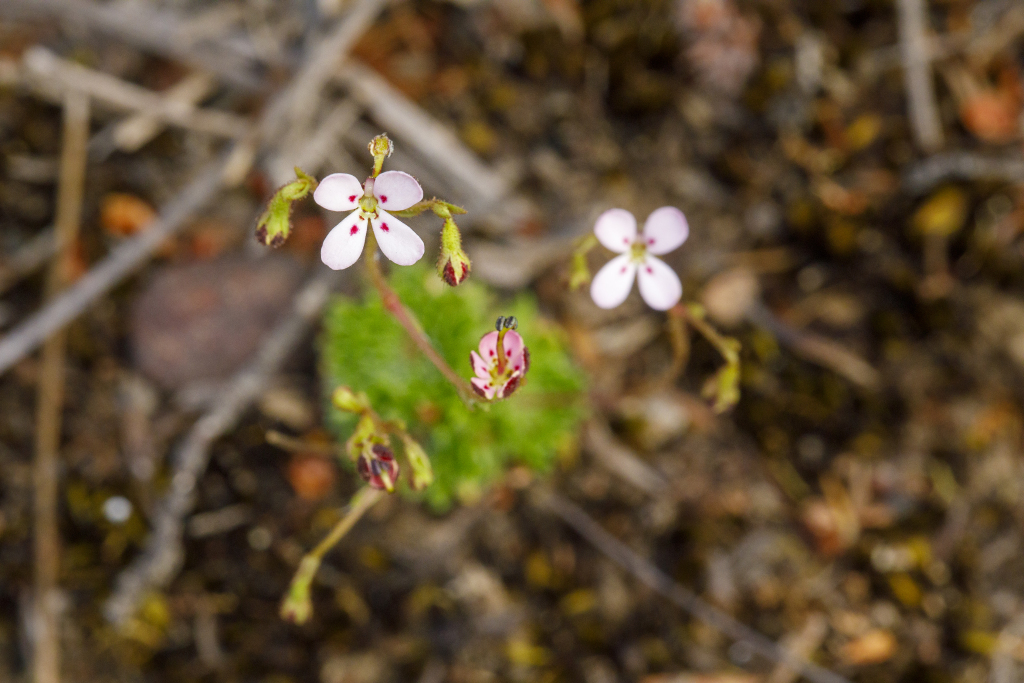Stylidiaceae
Ephemeral, annual or perennial herbs or small shrubs. Leaves simple, parallel veined, exstipulate, in basal rosettes or whorl-like tufts or scattered along stems. Inflorescences terminal, simple or compound, cymose or racemose. Flowers bisexual, usually zygomorphic; calyx 5-lobed, adnate to the ovary in lower part, lobes free, or variously united; corolla tubular, 5-lobed, the anterior lobe differentiated in shape and size (the labellum); stamens 2, filaments connate with the style forming a column (the gynostemium), anthers 2-celled; stigma entire or 2-lobed, situated between anthers; ovary inferior, incompletely 2-locular, ovules numerous, attachment axile or free-central. Fruit a 2-valved capsule; seeds numerous, embryo minute, in fleshy albumen.
5 genera with over 200 species, predominantly in temperate and tropical Australia, extending to South-east Asia, New Zealand and South America; 2 genera in Australia.
Stylidicaeae is renowned for its unusual pollination mechanisms. In Levenhookia the labellum is hooded and sensitive, and when triggered by an insect is reflexed to reveal the anthers and stigma. In Stylidium the column is motile (except in S. beaugleholei) and the pollen is precisely placed and removed from pollinating insects' bodies. These mechanisms of pollination employ some of the fastest movements known for plants.
Raulings, E.J. (1999). Stylidiaceae. In: Walsh, N.G.; Entwisle, T.J., Flora of Victoria Vol. 4, Cornaceae to Asteraceae, pp. 579–587. Inkata Press, Melbourne.
 Spinning
Spinning


